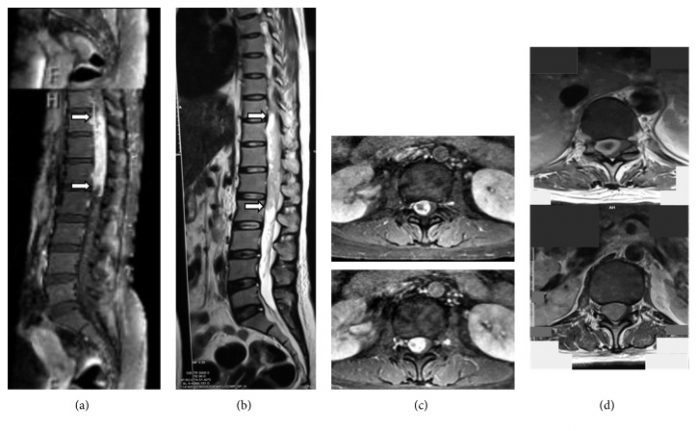
Hemorrhagic spinal schwannoma, a rare slow-growing nerve sheath tumour.
This article describes the case of a 38-year-old female patient who presented to the hospital with difficulty standing up from a squatting position with a history of 2 years. She also complained of heaviness and numbness in both her legs, radiating from the hips to the knees and ankles. Her history revealed that the symptoms had worsened in a time period of 4 months. In addition, both her lower limbs had become weaker. قانون البوكر The patient was diagnosed with hemorrhagic spinal schwannoma. لعبة القمار اون لاين
Laboratory tests were unremarkable with no signs of infection. The tests were negative for tumour markers, also. Radiological examination was also unremarkable with no signs of abnormalities. Doctors advised an MRI which showed a tumour in the intradural region at the level of T10-T12. The patient was advised surgery for removal of the tumour. However, the patient refused surgery and preferred a bone setter. 2 months later the patient was back at the hospital with a complaint of profound weakness on her lower extremity.
The patient’s physical examination was significant for paresis on both lower extremities from her thigh in left and lower right limbs.
Her patellar reflexes were exaggerated in both limbs. Doctors advised another MRI which showed that the mass had grown to lumbar vertebrae L2. In addition, the patient also showed worsening of neurological statuses and impaired sensibility with urinary and defecation problems. The findings led to the diagnosis of Hemorrhagic schwannoma in the medulla spinalis, a rare slow-growing nerve sheath tumour. لعبة بوكر The patient underwent a spinal manipulation procedure.
She was further advised a surgical procedure for decompression and exploration. However, the patient did not gain function of her lower extremities at the time she was being discharged. There were some improvements in her lower extremity at 6 months follow-up. The patient was able to walk with help from a walker. Although, there were no improvements in her bowel movements and urination.
References
Hemorrhagic Spinal Schwannoma in Thoracolumbar Area with Total Paraplegia https://www.ncbi.nlm.nih.gov/pmc/articles/PMC6334320/



